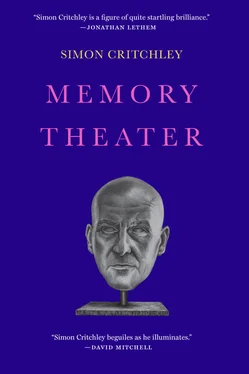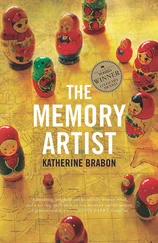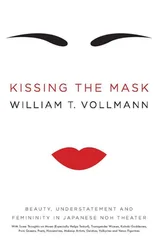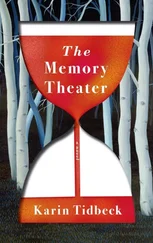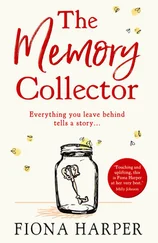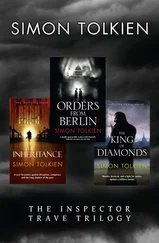In the bull’s-eye center of the circle, the date of death was marked, sometimes together with the cause and location and occasionally a short comment. In Heidegger’s chart, Michel wrote, “Le 26 mai 1976, après une nuit d’un sommeil réparateur, Heidegger s’endormit à nouveau et ne se réveilla jamais!” Clearly, Michel envied Martin his final night of refreshing sleep and his peaceful demise.
Michel had obviously discovered some weirdly idiosyncratic technique for plotting and recalling the lives and works of the philosophers. But then my mind cast back to Michel’s essay on Hegel and to Yates’s The Art of Memory . These were not standard astrological projections at all. They were memory maps, spatially organized devices like the memory theaters Michel had discovered in Francis Yates’s book. They weren’t so much birth charts as death charts, necronautical rather than genethlialogical. Their purpose was to plot the major events in a philosopher’s life and then to use those events to explain his demise. Much of the script was simply illegible or had faded and many of the charts had odd, vaguely occult-like geometrical designs that resembled crayon drawings I had seen by schizophrenics when I was visiting my friend Samson in hospital after his suicide attempt (crayons were dispensed rather than pens and pencils in order to avoid suicide attempts or attacks on staff). I had no idea what the designs meant.
Beneath the initial eleven memory maps, I came across another, very dog-eared chart that was clearly written in a different hand. I peered hard through the magnifying glass. The chart was signed with a flourish with the name printed underneath in uppercase in the traditional French fashion. It read “Henri MONGIN” and it was dated 1985. I knew that name. I wracked my brains and recalled a conversation I’d had with Elizabeth on one of our drizzly Welsh walks. I’d asked her where Michel’s interest in astrology and the occult had begun and she said that he’d learned it at the hands of one of his philosophy teachers, also an early follower of Heidegger, Henri Mongin. Clearly, Mongin had projected Michel’s memory map and Michel was the inheritor of a technique that Mongin had either discovered or also inherited from a teacher. Who knew how far back this occult tradition might extend? If I could produce an heir, then maybe it would continue.
Looking more closely at the map, all the events in Michel’s life were carefully recorded: his family background in the Alsace, the occupation of his father, who was also a philosophy teacher in a lycée in Strasbourg, the birth of his younger brother, Roger, his marriage with Elizabeth in Rhinebeck, New York, in 1970, and so on. But the strangest thing was that the map also predicted the events of Michel’s life after the date of its composition. It mentioned his elevation to full professor at Paris XII (Créteil) in 1991 and subsequently at the Sorbonne in 1995. It also listed the titles of the books that Michel would go on to publish: Nietzsche et la métaphysique and Heidegger et l’essence de l’homme , his most impressive published work. After La fracture de l’histoire , from 1994, there followed an increasingly mediocre series of essay collections that finished with Par-delà le nihilisme from 1999. It was the most productive period of Michel’s life. I remembered him excitedly saying to me in his apartment in around 1996, “J’ai trois livres en chantier!” He had three books in production. No children were named on the map.
Michel knew that he was doomed. Did Elizabeth know too? Is that why she left him? She saw from the map that he would have no children. Michel could see the date, time, cause, and location of his death: “0421 h, le 18 août 2003, La Verrière (Yvelines), crise cardiaque.” I checked the precise details with my friend Beatrice in Reims, who had been a student and close friend of Michel. La Verrière was the little town to the southwest of Paris where Michel had spent his final years in a sanatorium. Knowing his fate, he had simply lost the will to live. He arrived dead just on time.
I movedmore rapidly through the stack of charts with a growing sense of unease. All of the remaining maps were devoted to philosophers who had been either superiors or contemporaries of Michel or whom he had met and become curious about, such as his predecessor Sarah Kofman, Reiner Schürmann (whose name was on my office door when I arrived in New York and remained. It felt like a tomb), Emmanuel Levinas, André Schuwer, Gilles Deleuze, Dominique Janicaud, Michel Henry, and Hans-Georg Gadamer. I thought this was clearly some eccentric mark of affection. Michel had secretly designed memory maps for the philosophers he admired and had met. But that hypothesis fell to pieces with the next discoveries.
Digging deeper, I found maps for philosophers who had died or were to die after Michel’s death. What was so terrifying was that all the predictions proved to be true, although Michel couldn’t possibly have known that. There was a chart for his longtime acquaintance Jacques Derrida, who would die from the effects of pancreatic cancer in October 2004, four months after I first discovered his map, at the same age as his father, who had died of the same disease. Richard Rorty, whom Michel had met and befriended during his frequent visits to Paris in the early 1990s, would die from the same disease as Derrida on June 8, 2007. Michel’s maps seemed deadly accurate.
Six maps remained unread. I knew all the names and they were all still very much alive and a few of them were close friends of mine.* Mine was fourth in the pile. My throat dried, but my mind was crystal clear. I made sure I was alone. As I put the magnifying glass to my eyes, I felt strangely exhilarated rather than afraid. I also suddenly recalled very clearly that when I’d met Michel in Perugia, as usual, in 1994, he’d asked me for my birth details, exact time and place. He was very insistent about the accuracy of the information I provided. I had to call my mum to find out (Saturday, 27 February 1960. 1500h. My dad was at the football: LFC/YNWA). I remember saying half-jokingly to Michel: “What, are you going to make my astrological chart?” He smiled.
I peered through the magnifying glass at my destiny. The detail was fascinating. Working through the concentric circles, I moved among briefly noted events in my life that Michel couldn’t possibly have known about: my father’s apprenticeship at Camel Laird shipyard in Birkenhead, his job as a sheet metal worker, my mother’s breast cancer in 1971, his infidelities, their divorce, the industrial accident in 1978, the names of the bands I played in, the dates of my university education, my ex-wife’s name, my son’s date of birth, the facts of our separation and estrangement, even the job in New York, followed by another job in the Netherlands, apparently beginning in 2009. In the inner circle was a list of works beginning with The Ethics of Deconstruction in 1992 and Very Little … Almost Nothing in 1997, both of which I had given to Michel. I don’t think he read them. No matter. The list continued with perfect accuracy until 2004 and then on into the future. It appeared that I would publish a book on Wallace Stevens in 2005 (weirdly, this was already largely written); something called Infinitely Demanding in 2007, dedicated to my mother (I laughed); and The Book of Dead Philosophers in 2008 (or was it 2009? Hard to read). After that, the handwriting became nearly illegible. There was something written in German on mysticism, and then some final titles. Illegible. Did that say “tragedy”? Maybe. There was the name “Hamlet” with a question mark beside it. I had no idea. Funny, there was no mention of the text that you are now reading.
Читать дальше
